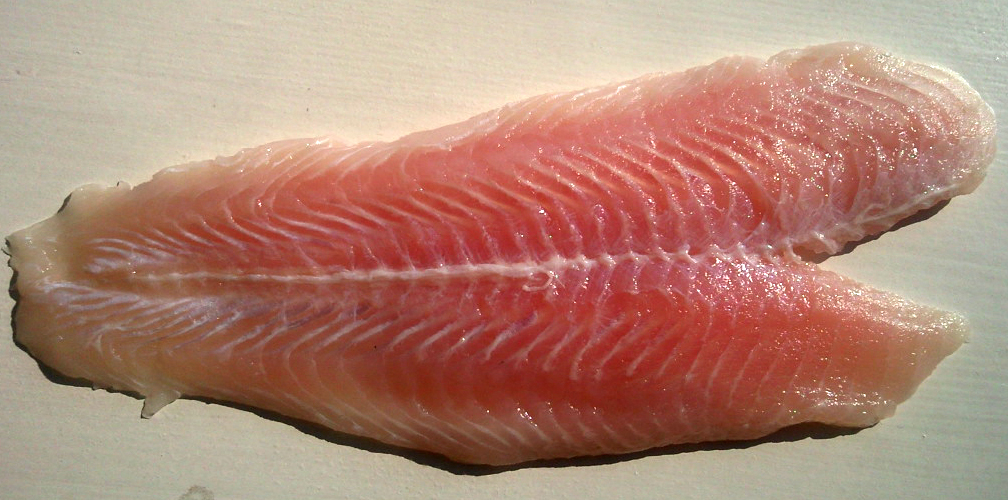China becomes largest pangasius market in Asia

The report analyses the market situation over the year 2016 and the first quarter 2017.
In 2016, Latin America and Asia together accounted for nearly 50 percent of global pangasius imports (whole frozen and frozen fillets) with both regions demonstrating positive growth compared with 2015. China has become the largest market for Vietnamese pangasius in Asia, overtaking Thailand in 2016.
Viet Nam
Viet Nam, the largest producer of pangasius in the world, accounted for 72 percent of global pangasius production in 2015. The Vietnam Association of Seafood Exporters and Producers (VASEP) reports that the farming areas in the Mekong Delta have been reduced by over 3 400 hectares in 2016 with production totalling 1 million tonnes. Production has remained relatively flat over the past six years, declining in 2014 and 2015. 2015 production figures were estimated at around 800 000 tonnes.
For 2016, the export value of Vietnamese pangasius strengthened by almost 10 percent compared with 2015 to reach a total value of US$1.71 billion, according VASEP. This export value growth rate was particularly focused on the USA and China while the markets in Europe remained depressed. In volume terms, EU imports of Vietnamese pangasius declined by 5 percent in 2016 compared with 2015, to total 111 300 tonnes.
To further exacerbate this weakening demand in the EU, there have been some recent happenings in the EU market that have not been positive for Vietnamese pangasius exports. Carrefour, a major retail grocery chain in Europe, announced in late January 2017 that it would stop selling Vietnamese pangasius fish in some markets (Spain, Belgium, Italy and France, the home country of this supermarket chain). This decision was attributed to their belief about the adverse impacts pangasius farms have on the environment in terms of water pollution from production waste. In addition to this, also in January 2017, a Spanish TV station aired negative footage about the Vietnamese pangasius industry. The footage showed pangasius being farmed in unhygienic cages and fed with non-industrialised feed such as dead fish and other food waste. It attributed these poor practices for the reason behind the low price of Vietnamese pangasius while comparing it with the industry in Spain. The footage also suggested to consumers not to eat the fish more than two times a month to protect their health. The scale of how these developments will impact the EU pangasius market remains to be seen, but it is certainly not helpful in an already depressed market. VASEP has remained positive, reporting that exports to the EU may be affected somewhat but not significantly.
Exports to the single largest market for Vietnamese pangasius, the USA, were up by almost 23 percent in value to reach US$387.4 million. This growth took place despite competition with tilapia. Meanwhile, the anti-dumping duty and catfish inspection programme will continue to affect Viet Nam’s pangasius exports to the USA in 2017 as the number of processors eligible for export will be lower under this programme. The new US catfish inspection programme now falls under the regulatory jurisdiction of the US Department of Agriculture’s (USDA) Food Safety and Inspection Service (FSIS), rather than the US Food and Drug Administration (FDA). The
programme requires all businesses processing Siluriformes fish products for the US market to have their names included on the list of businesses eligible for export to the USA.
USA
Imports of frozen catfish were up 21 percent in 2016 compared with 2015. Although pangasius accounted for the largest share of imports, supplies also increased for other frozen catfish species. In this category, China, Thailand and Viet Nam were the main suppliers.
Latin America
Approximately 90 percent of the pangasius that enters the Latin American markets are frozen fillets, primarily supplied by Viet Nam. In 2016, a 125 000 tonnes were imported into Latin American markets, which is a 12 percent rise compared with 2015. The three largest markets were Mexico, Brazil and Colombia, taking up shares of 46 percent, 27.5 percent and 19.5 percent shares respectively.
Asia
As indicated, China became the largest market for pangasius (whole and fillets) in Asia in 2016 overtaking Thailand. Roughly 33 500 tonnes of pangasius were imported into China, doubling its imports compared with 2015. Thailand, now only the second leading importer, imported 24 800 tonnes in 2016 (+20 percent) followed by Singapore (17 600 tonnes). In Thailand, wholesale prices of fresh pangasius in early February ranged from US$0.70-0.90 per kg. In the Singapore retail market in early March, fresh (previously frozen) pangasius was sold at US$17 per kg. Average import prices in 2016 were US$1.83 per kg from Viet Nam, which was almost an 11 percent decline from average imports prices in 2015.
Japan and India are other Asian markets that continue to show strong demand. The average import price paid in Japan for frozen pangasius fillets was US$3.15 per kg. In India, pangasius is predominantly consumed through the catering trade. In 2016, imports of frozen pangasius fillets into Japan was up by 55 percent in volume to 4 100 tonnes and 16 percent up to India at 4 700 tonnes.
Outlook
Since the start of the Tet holidays (Viet Nam’s Lunar New Year) in late January, pangasius prices have increased in Viet Nam, indicating good demand as supplies continue to be short and buying interest grows from China. However, industry sources in Viet Nam report that the rise in price levels are not unusual after the holidays, especially considering the leaner season in the coming months. The US market will remain strong supported by the demand from Lent season in March/April. Due to the negative press, the EU market will remain in the doldrums.
The report analyses the market situation over the year 2016 and the first quarter 2017.

